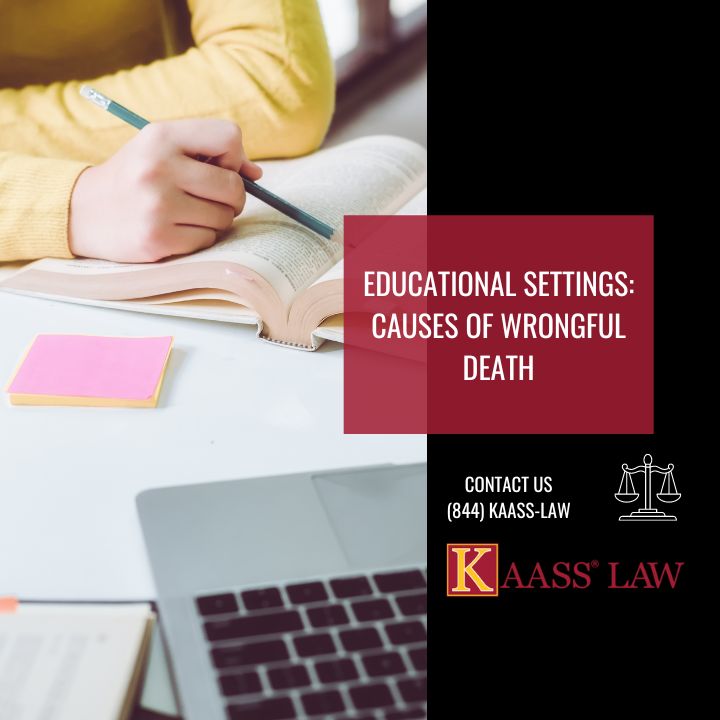Educational settings are designed to provide secure havens where students can absorb knowledge, evolve personally, and lay the foundation for their forthcoming journeys. Yet, there are instances when misfortune strikes, resulting in the loss of life owing to negligence, lack of attentiveness, or insufficient safety precautions. The occurrence of wrongful death within educational settings stands as a deeply distressing truth, casting illumination on the imperative of elevating the significance of safeguarding students’ welfare and security. Within this blog, we will meticulously explore the factors that give rise to such unfortunate incidents, delve into the ramifications they entail, and outline proactive measures aimed at averting wrongful deaths in educational contexts.
Grasping Wrongful Death in Educational Settings
The concept of wrongful death encompasses the heart-wrenching scenario of life being prematurely extinguished due to an individual’s negligence, deliberate harm, or the violation of their duty. When such tragic episodes unfold within an educational backdrop, they have the potential to involve students, educators, administrative personnel, and even visitors. Wrongful deaths manifest across a spectrum of educational settings, spanning from elementary and secondary institutions to higher education establishments, vocational centers, and even supplementary extracurricular pursuits.
Causes of Wrongful Death in Educational Settings
Negligence on the part of educational institutions can lead to severe consequences. Inadequate supervision, failure to maintain safe premises, and disregard for known risks can all contribute to accidents that result in fatalities. Secondly, a lack of proper safety measures and protocols can be a significant factor. Insufficient emergency preparedness, lack of proper training for staff, and inadequate security can create an environment ripe for accidents. Thirdly, dangerous conditions within the educational facility can lead to accidents. This includes poorly maintained infrastructure, defective equipment, and even environmental hazards. Fourthly, in cases of bullying and violence, schools have a responsibility to intervene and provide a safe environment. Failure to do so can result in severe consequences, including loss of life. Finally, educational settings should be equipped to handle medical emergencies. Inadequate medical care and delayed response to emergencies can escalate a situation to a tragic outcome.
Consequences of Wrongful Death in Educational Settings
The consequences of wrongful death in educational settings are far-reaching and deeply impactful:
- Emotional Trauma: The loss of a student, teacher, or staff member can have a profound impact on the emotional well-being of the entire school community. Students and colleagues may struggle with grief, guilt, and anxiety.
- Legal Ramifications: Educational institutions can face legal actions from the families of the deceased. Wrongful death lawsuits can result in significant financial liabilities, damage to reputation, and legal penalties.
- Regulatory Scrutiny: Incidents of wrongful death often lead to increased regulatory scrutiny. Educational institutions may face investigations from government bodies, affecting their operations and public image.
- Community Distrust: A wrongful death can erode the trust that parents and the community have. That may be in the institution’s ability to provide a safe learning environment. This can lead to declining enrollment and a tarnished reputation.
Preventive Measures and Solutions
To prevent wrongful deaths in educational settings, a proactive approach to safety and well-being is crucial:
- Comprehensive Safety Policies: Educational institutions must establish and enforce comprehensive safety policies. It should cover everything from emergency procedures to bullying prevention. Regular drills and training sessions can ensure that everyone is prepared for various scenarios.
- Supervision and Monitoring: Adequate supervision is essential, especially in environments where students are engaging in physical activities or using equipment. Staff members should be attentive and responsive to potential risks.
- Security Enhancements: Implementing security measures such as surveillance systems, controlled access points, and security personnel can deter potential threats and provide a safer environment.
- Mental Health Support: Addressing mental health issues and providing adequate counseling services can help prevent incidents related to bullying, violence, and emotional distress.
- Collaboration with Parents and Community: Involving parents and the local community in safety initiatives can create a network of support and vigilance. Community involvement also holds educational institutions accountable for the safety of their students.
- Regular Audits and Assessments: Conduct regular safety audits and risk assessments to identify potential hazards and areas for improvement. Above all, this is a proactive approach that can help prevent accidents before they occur.
Wrongful Death Attorney
The loss of a life in an educational setting is a tragedy that affects the entire community. Wrongful deaths remind us of the critical importance of safety measures, proactive policies, and the responsibility of educational institutions. As a matter of fact, we can work towards creating educational environments that are truly conducive to learning and well-being.
Additionally, visit our other website for information on potential other cases we may assist you in. Call our office for further assistance at 310.943.1171

